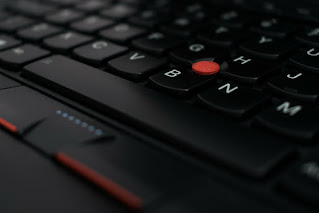As technology continues to advance, keyboards have become an essential part of our daily lives. Whether you're a professional typist, a gamer, or simply using your computer for everyday tasks, it's crucial to keep your keyboard clean and well-maintained for optimal performance and longevity. In this comprehensive guide, we will provide you with expert tips and techniques to ensure that your keyboard remains in top shape, surpassing the competition in both functionality and durability.
1. Regular Dusting and Cleaning
Dust and dirt can accumulate on your keyboard over time, affecting its performance and functionality. To keep your keyboard dust-free, start by turning off your computer and unplugging the keyboard. Gently turn the keyboard upside down and lightly tap on the back to dislodge any loose debris. You can also use a can of compressed air to blow away the dust from between the keys. Remember to hold the can upright and use short bursts to avoid moisture buildup.
For a deeper clean, you can use a soft, lint-free cloth dampened with a mild cleaning solution or isopropyl alcohol. Wipe the surface of the keys and the keyboard body, being careful not to let any liquid seep into the switches or other sensitive components. Allow the keyboard to air dry completely before reconnecting it to your computer.
2. Removing Stubborn Stains and Spills
Accidental spills are bound to happen, and if not addressed promptly, they can cause irreversible damage to your keyboard. If you spill any liquid on your keyboard, immediately disconnect it from your computer and turn it upside down to let the liquid drain out. Avoid shaking the keyboard, as it can spread the liquid further.
To remove stubborn stains or dried spills, use a cotton swab or a soft toothbrush dipped in isopropyl alcohol. Gently scrub the affected area in a circular motion until the stain is removed. For sticky residue, you can also apply a small amount of mild detergent or dish soap to the cloth or toothbrush. Remember to wipe away any excess moisture and allow the keyboard to dry completely before reconnecting it.
3. Protecting Your Keyboard
Prevention is key when it comes to keyboard maintenance. To protect your keyboard from dust, spills, and debris, consider using a keyboard cover or a silicone keyboard skin. These accessories provide an additional layer of protection against everyday hazards and are easily removable for cleaning.
Additionally, it's important to practice good hygiene while using your keyboard. Avoid eating or drinking near your computer to minimize the risk of spills. Clean your hands before using the keyboard to prevent the transfer of oils and dirt onto the keys. Encourage regular handwashing among those who share the keyboard to maintain cleanliness.
4. Maintaining Proper Ergonomics
Keyboard maintenance is not just about cleanliness; it also involves ensuring proper ergonomics to promote comfort and reduce the risk of repetitive strain injuries. Position your keyboard at a comfortable height and angle, allowing your wrists to remain straight while typing. Consider using an ergonomic keyboard or wrist rest for additional support.
Take regular breaks during prolonged typing sessions to stretch your fingers, hands, and wrists. Performing simple hand and finger exercises can help alleviate tension and improve circulation. Remember to maintain good posture and adjust your chair and desk setup to promote a neutral typing position.
5. Professional Maintenance
In some cases, despite your best efforts, your keyboard may require professional maintenance. If you notice persistent issues such as unresponsive keys, inconsistent key presses, or physical damage, it's advisable to seek assistance from a reputable computer repair service. They can diagnose and address any underlying problems to ensure the longevity and optimal performance of your keyboard.
6. Additional Tips and Tricks
- Avoid using harsh chemicals or abrasive materials to clean your keyboard, as they can damage the surface or key labels.
- If your keyboard has removable keycaps, you can clean them individually by gently prying them off using a keycap puller or a flat-headed screwdriver. Clean the keycaps with a mild cleaning solution, rinse them thoroughly, and allow them to dry before reattaching.
- Consider investing in a keyboard maintenance kit,


.png)
.png)
.png)












.webp)





.webp)